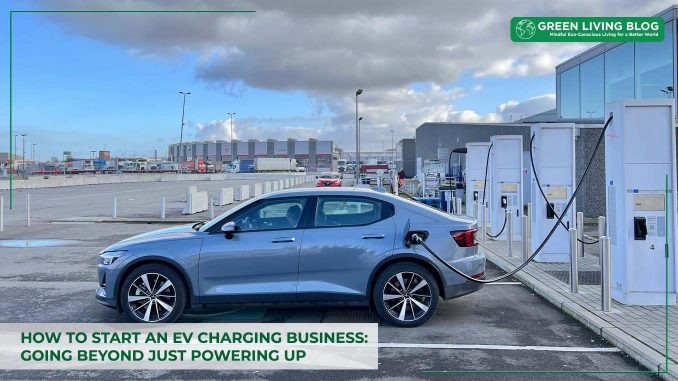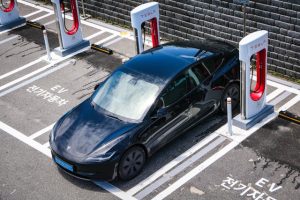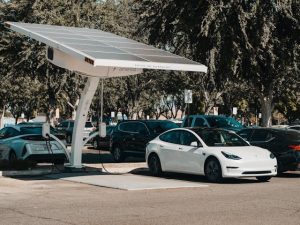
At first glance, setting up an electric vehicle (EV) charging station might seem simple—plug in, charge, and drive away. But dig deeper, and you’ll see there’s far more at play.
The commercial EV charging ecosystem blends cutting-edge technology, customer experience, and sustainability to redefine what it means to “refuel.”
For businesses, success in this field demands more than just providing power. It’s about building an exceptional service, anticipating future needs, and contributing to a greener future.
Let’s explore what it takes to thrive in the rapidly growing EV charging sector.
Building the Foundations: Infrastructure That Works

At the heart of any EV charging business lies its infrastructure. However, creating a successful network isn’t as simple as installing chargers.
Unlike traditional petrol stations, EV infrastructure requires strategic planning and a future-focused approach.
The Importance of Location
Where a charging station is placed can make or break its success. Think busy shopping centres, motorway services, or urban hotspots—places where EV drivers naturally pause. A well-placed station offers both convenience and safety, ensuring it becomes a go-to destination rather than a forgotten backroad setup.
Power Reliability: A Must-Have
Few things are more frustrating for drivers than arriving at a station only to find it offline or unable to handle demand. Robust grid connections, backup power solutions, and scalable systems are critical to keeping stations operational, even as demand grows.
Creating a Customer Experience That Stands Out
EV charging is more than a utility—it’s an experience. In a competitive market, a station’s success hinges on how seamless and enjoyable that experience feels to users.
Effortless Payments
Picture this: you pull up to charge and are greeted by a payment system that’s clunky or limited. It’s an immediate turnoff. Offering a range of payment options, contactless, app-based, or even traditional cards, removes frustration and builds trust.
Faster Charging, Happier Customers
No one likes waiting. High-speed chargers are essential for time-strapped drivers, especially in cities or along motorways. A faster turnaround means more satisfied customers and better utilisation of each charging point.
Making the Wait Worthwhile
While waiting is inevitable, it doesn’t have to be boring. Providing amenities like free Wi-Fi, coffee shops, or comfortable seating transforms down time into a pleasant break. Plus, these extras often generate additional revenue for businesses.
The Role of Technology: Smarter Solutions

Advanced technology powers the EV charging industry, improving efficiency, reducing costs, and enhancing user satisfaction.
Smart Charging Systems
Dynamic energy management systems adjust power delivery based on demand, ensuring efficient energy use and preventing grid strain. Offering incentives for off-peak charging or renewable energy use appeals to eco-conscious customers and reduces operational costs.
Data-Driven Decisions
Charging stations collect valuable data—peak usage times, payment preferences, customer behaviours that businesses can analyse to optimise operations and identify opportunities for expansion.
Real-Time Connectivity
Providing live updates on charger availability, waiting times, or nearby amenities gives users confidence and convenience. A connected network is an easy way to build loyalty and stand out from competitors.
Sustainability: Aligning with Green Values
For many EV drivers, sustainability isn’t just a preference, it’s a priority. Stations that embrace eco-friendly practices can strengthen their appeal and build a loyal customer base.
Integrating Renewable Energy
By adding solar panels or wind turbines, businesses can reduce their reliance on the grid and slash their carbon footprint. This approach aligns with the environmentally friendly ethos of EV drivers.
Energy Storage for Efficiency
Battery storage systems allow stations to store surplus energy during off-peak times or on sunny days. This stored energy can then be used during high-demand periods, ensuring both efficiency and reliability.
Carbon Offset Initiatives
Some companies go the extra mile by offsetting emissions from construction or operations through environmental projects. Such actions resonate with consumers and elevate the station’s brand image.
Regulations and Compliance: Meeting the Standards

Navigating the regulatory landscape is essential for long-term success in the EV charging business.
Staying Ahead of Compliance
Governments often incentivise EV infrastructure with grants, tax breaks, or rebates. Staying informed about these opportunities can significantly lower costs while ensuring legal compliance.
Interoperability for Better Access
Drivers value flexibility. Allowing them to use multiple networks with a single account simplifies the process and makes your station a more attractive option.
The Economics of EV Charging
To thrive financially, businesses need a clear strategy that balances costs and profitability.
Managing Expenses and Revenue
From installation to maintenance, costs can add up. A balanced pricing strategy—whether pay-per-use, subscription-based, or bundled with other services—ensures affordability for customers while keeping the business sustainable.
Diversifying Income Streams
Charging stations don’t have to rely solely on electricity sales. Offering additional services like cafés, retail spaces, or even car washes turn a station into a destination, creating new revenue opportunities.
Challenges and Innovations Shaping the Future

The EV charging industry faces challenges, but it’s also brimming with innovation.
Grid Demand Management
As EV adoption grows, so does the pressure on local grids. Smart energy systems and partnerships with utility providers can ensure smooth operations as demand rises.
Cybersecurity: Protecting Customers and Systems
With payment systems and customer data in play, robust cybersecurity measures are essential. Regular updates and strong protocols safeguard both the business and its users.
Future Technologies
From wireless charging pads to ultra-fast chargers that can power a vehicle in under 20 minutes, the industry’s future is promising. Innovations like vehicle-to-grid (V2G) technology could even allow EVs to supply power back to the grid.
Conclusion: More Than Plugging In
The EV charging business is far more than a plug-and-play industry. It’s about delivering exceptional experiences, harnessing smart technology, and leading the charge for a sustainable future. Businesses that think beyond the basics have the chance to shape not just their success but the future of transportation itself.
![]()
Author Profile
- Online Media & PR Strategist
- Blogger and Educator by Passion | Senior Online Media & PR Strategist at ClickDo Ltd. | Fascinated to Write Lifestyle Blogs in News & Education I have completed a journalism summer course at the London School of Journalism and manage various blogs.
Latest entries
 LeisureApril 16, 202510 Best Green UK Hotels for Eco-Tourists
LeisureApril 16, 202510 Best Green UK Hotels for Eco-Tourists Best practicesApril 14, 20258 Best Ways to Reduce Your Carbon Footprint
Best practicesApril 14, 20258 Best Ways to Reduce Your Carbon Footprint Green Expert GuidesMarch 28, 2025Lisbon Living: Where Sustainable Charm Meets Urban Energy
Green Expert GuidesMarch 28, 2025Lisbon Living: Where Sustainable Charm Meets Urban Energy EnvironmentJanuary 21, 2025Buying Eco-Friendly Homes: 6 Eco Questions to Ask Your Real Estate Agent
EnvironmentJanuary 21, 2025Buying Eco-Friendly Homes: 6 Eco Questions to Ask Your Real Estate Agent






Leave a Reply
You must be logged in to post a comment.